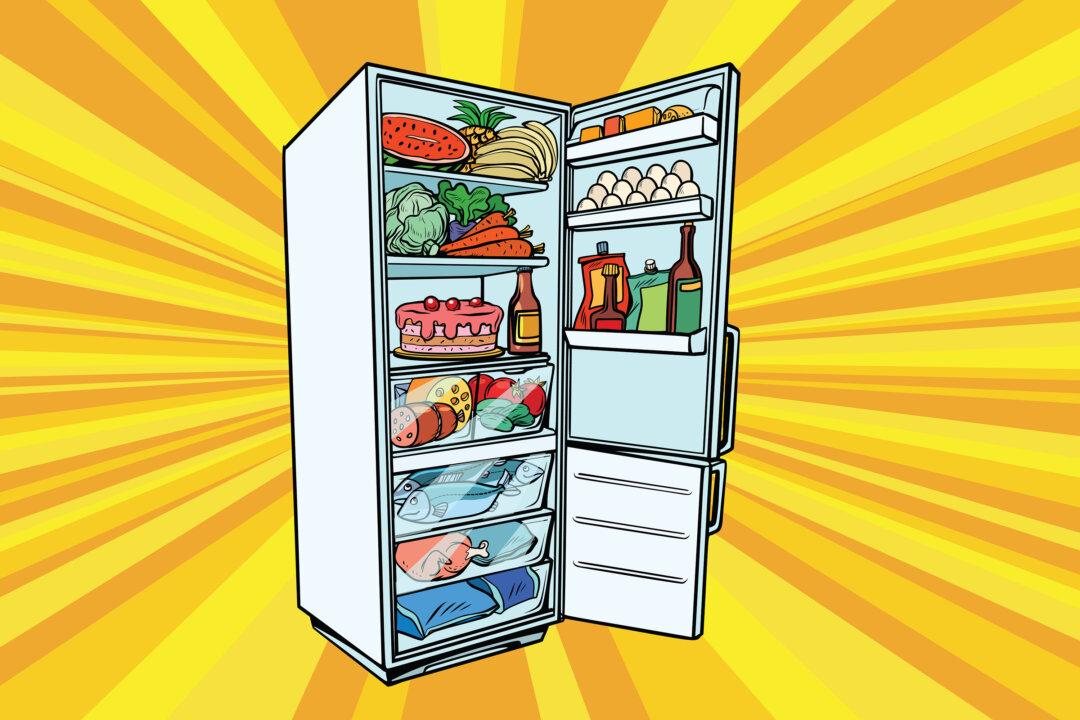MINNEAPOLIS—Do you feel ashamed when you toss out rotting food? Maybe it’s a produce bag of slimy green onions decomposing in the bowels of your fridge. Or a forgotten bin of leftovers that would have made a terrific reheated lunch, if only you had noticed it earlier.
Jiaying Zhao used to feel guilt-ridden, too. But she says wasting food is not entirely our fault.
“I don’t think the fridge is designed with human behavior in mind,” Zhao said. “The design hasn’t changed for the past three or four decades. We’re taught to keep produce and perishables in drawers in the back of the fridge where it’s coldest. But those spots are the hardest to see.”
These out-of-sight-out-of-mind design flaws can lead to refrigerator blindness—a common malady that prevents us from seeing the contents of our own fridge.
Personal solutions to climate change often follow a narrative of self-depriving don’ts. Don’t eat meat. Don’t drive. Don’t take long showers. Don’t buy this, don’t buy that.
Every year, a typical family of four wastes about $2,500 of food, everything from moldy cream cheese to bags of browned salad that we never got around to. You might think the amount of uneaten food in households is a drop in the bucket compared to what’s thrown out by restaurants and grocery stores. You'd be wrong.
Prioritize Your Fridge’s Real Estate
Fill eye-level spaces with your most time-sensitive perishables, such as produce, leftovers, meat, milk and yogurt. This is also a good place to place healthy snacks such as carrot sticks and celery so you’re more likely to grab them rather than potato chips when you’re hungry.Designate a highly visible “eat first” area such as the top left corner of your refrigerator. Use a clear basket to store a half-apple, leftovers that are about to turn, or a cup of sliced onion. Keep it simple, folks; no need to dash to the Container Store. “I got my basket for $2 from a thrift store,” says Jenny Kedward, food waste prevention specialist at Hennepin County.
Beware the Crisper Drawer
For fruits and veggies, the crisper drawers will do nothing to keep them fresh if you forget about them. Zhao’s trick is to place produce in her refrigerator doors, where she’s more likely to notice a cucumber about to go soft. She swears she has not wasted a single piece of food since reorganizing her fridge a couple of years ago.Some experts, however, warn that the doors are the warmest part of the fridge, which will cause your beautiful greens to wilt.
Zhao doesn’t deny that. “You see the wilt, so you eat them sooner,” she says.
Shop the Fridge
Don’t bolt to the grocery store without checking your fridge and pantry first, says Twin Cities-based chef and home organizational expert Joor Erin. Over-buying items will lead to not only food-waste guilt but buyer’s remorse. If you frequent Costco or Sam’s Club, bring a friend or relative. You can split the bill—as well as those giant containers of blueberries and mushrooms.Carve Out Time to Prep Your Veggies
Joor and her children chop much of their produce, such as broccoli and bell peppers, on the day she buys her groceries. While this requires more effort on the front end, it may reduce any motivational barriers to cooking or eating vegetables later in the week.Eat the Fridge
Think creatively about dinner plans by eyeing what in your fridge needs to be eaten now. Joor’s kids know when it’s “Eat the Fridge” night. Those evenings are reserved for improvised meals, which might consist of a pear, cauliflower, some leftover spaghetti and cheese and crackers.Know Which Fruits and Veggies Don’t Mix
Some kinds of produce emit ethylene gas as they ripen, causing other foods around it to spoil quicker. Keep onions separate from potatoes and apples, for example. In fact, apples might be best left in their own bowl set on the counter. As a general rule, Joor says, “Fruits and veggies don’t like each other. They don’t get along.”Use Your Senses
Rely less on the product’s “use by” or expiration date and more on your nose, eyes and taste buds. Date labels set by the manufacturer typically refer to food quality rather than safety, Kedward says. “Our senses are pretty evolved.”Remix Real Ingredients
When planning your week’s meals, think of ingredients that can get you through multiple dishes. Lettuce can be incorporated into wraps one day, salad the next. Once you buy tortillas for the wraps, you can make quesadillas with them another night. Got ham? That can go into an egg scramble, fried rice and a salad.Get Everyone on the Same Page
Once you reorganize your fridge, congratulations! That is the hardest part. Zhao, the expert on human behavior, says straightening out the fridge will make it easier to see items and stick to your approach. But you must explain (and re-explain) the system to everyone in your household.“The habit is likely to form once we make the initial change,” Zhao says, “given that nobody else changes it back.”







